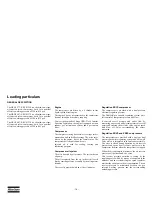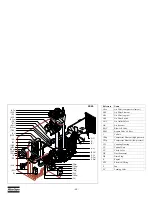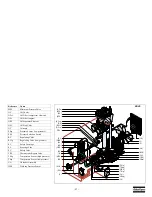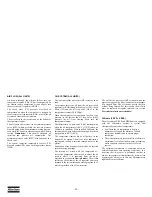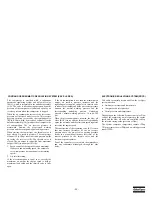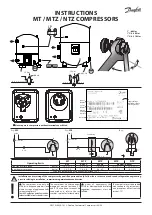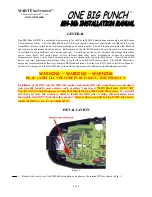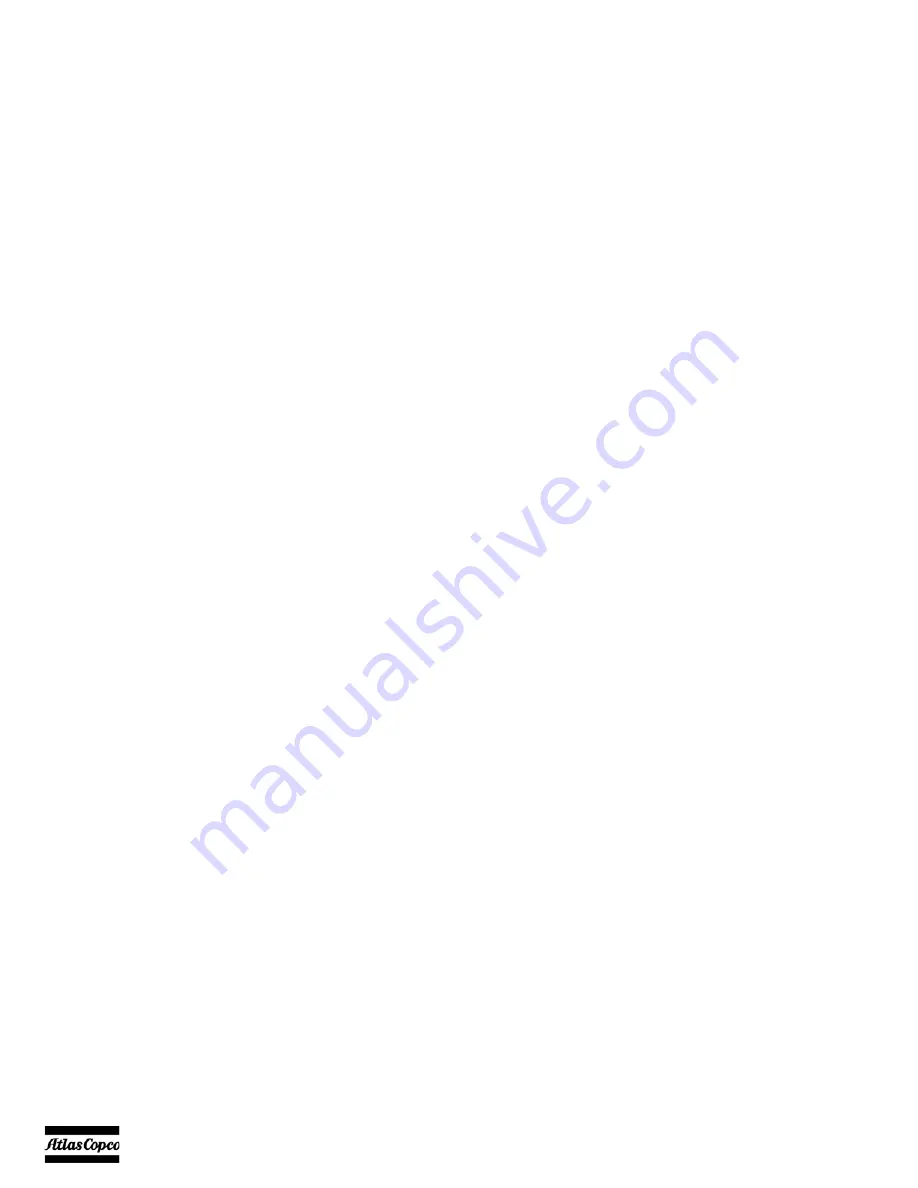
- 8 -
The manufacturer does not accept any liability for any
damage arising from the use of non-original parts and
for modifications, additions or conversions made
without the manufacturer’s approval in writing.
If any statement in this manual does not comply with
local legislation, the stricter of the two shall be
applied.
Statements in these safety precautions should not be
interpreted as suggestions, recommendations or
inducements that it should be used in violation of any
applicable laws or regulations.
GENERAL SAFETY PRECAUTIONS
1
The owner is responsible for maintaining the unit
in a safe operating condition. Unit parts and
accessories must be replaced if missing or
unsuitable for safe operation.
2
The supervisor, or the responsible person, shall at
all times make sure that all instructions regarding
machinery and equipment operation and
maintenance are strictly followed and that the
machines with all accessories and safety devices,
as well as the consuming devices, are in good
repair, free of abnormal wear or abuse, and are
not tampered with.
3
Whenever there is an indication or any suspicion
that an internal part of a machine is overheated,
the machine shall be stopped but no inspection
covers shall be opened before sufficient cooling
time has elapsed; this to avoid the risk of
spontaneous ignition of oil vapour when air is
admitted.
4
Normal ratings (pressures, temperatures, speeds,
etc.) shall be durably marked.
5
Operate the unit only for the intended purpose and
within its rated limits (pressure, temperature,
speeds, etc.).
6
The machinery and equipment shall be kept clean,
i.e. as free as possible from oil, dust or other
deposits.
7
To prevent an increase in working temperature,
inspect and clean heat transfer surfaces (cooler
fins, intercoolers, water jackets, etc.) regularly.
See the
Preventive maintenance schedule
.
8
All regulating and safety devices shall be
maintained with due care to ensure that they
function properly. They may not be put out of
action.
9
Care shall be taken to avoid damage to safety
valves and other pressure-relief devices,
especially to avoid plugging by paint, oil coke or
dirt accumulation, which could interfere with the
functioning of the device.
10 Pressure and temperature gauges shall be checked
regularly with regard to their accuracy. They shall
be replaced whenever outside acceptable
tolerances.
11 Safety devices shall be tested as described in the
maintenance schedule of the instruction manual
to determine that they are in good operating
condition. See the
Preventive maintenance
schedule
.
12 Mind the markings and information labels on the
unit.
13 In the event the safety labels are damaged or
destroyed, they must be replaced to ensure
operator safety.
14 Keep the work area neat. Lack of order will
increase the risk of accidents.
15 When working on the unit, wear safety clothing.
Depending on the kind of activities these are:
safety glasses, ear protection, safety helmet
(including visor), safety gloves, protective
clothing, safety shoes. Do not wear the hair long
and loose (protect long hair with a hairnet), or
wear loose clothing or jewellery.
16 Take precautions against fire. Handle fuel, oil and
anti-freeze with care because they are
inflammable substances. Do not smoke or
approach with naked flame when handling such
substances. Keep a fire-extinguisher in the
vicinity.
Summary of Contents for XRVS 1350
Page 2: ......
Page 24: ... 24 FLOW DIAGRAM EXHAUST AFTERTREATMENT HPFP DOC EAM DPF ...
Page 30: ... 30 SH4 COMPRESSOR CIRCUIT 9822 0963 68 ...
Page 135: ......
Page 136: ......














